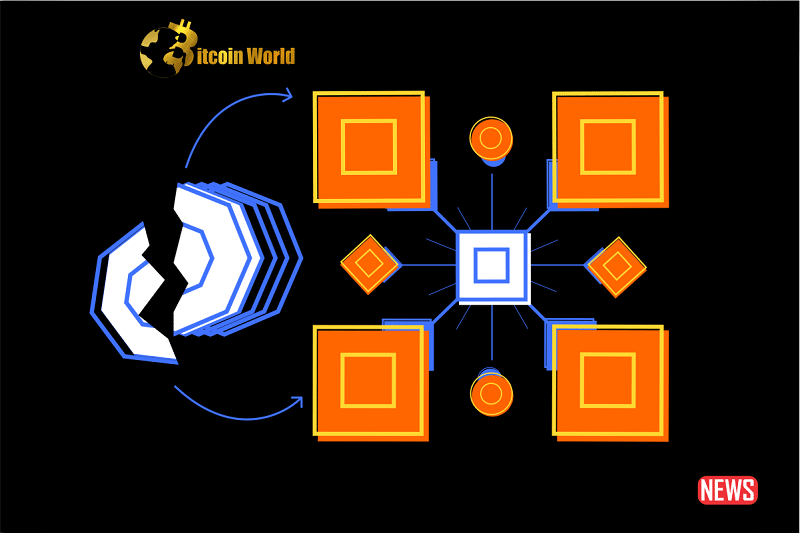Ever tried navigating the world of Web3 and felt like you were wrestling with a spaceship’s control panel? You’re not alone. The promise of a decentralized internet, brimming with user control, often clashes with the reality of complex interfaces and head-scratching processes. Let’s dive into why Web3’s user experience (UX) is a hot topic and what needs to change for it to truly go mainstream.
Web3 vs. Web2: Are We Trading Simplicity for Sovereignty?
Imagine the difference between driving an old stick-shift car and a modern automatic. That’s the analogy often used to describe the chasm between Web3 and Web2 experiences. While Web3 hands you the keys to your digital kingdom, it often comes with a steep learning curve. Think about it:
- Irreversible Transactions: Hit ‘send’ on a blockchain transaction, and there’s no going back. No ‘undo’ button. This can be nerve-wracking, especially for newcomers.
- Multi-Step Processes: Simple actions can involve multiple confirmations and wallet interactions, making even basic tasks feel like a chore.
As prominent Web3 UI/UX designer 0xDesigner puts it, many people might not even prioritize the level of control blockchain offers. Their primary concern? Making things easy. This creates a real puzzle for Web3 designers: How do you simplify things without sacrificing the core principles of decentralization and user ownership?
Why is Web3 UX So… Complicated?
Thomas Ling, with his experience at blockchain firm Immutable and gaming giant Riot Games, sheds light on this complexity. Web3’s focus on user ownership means users often need to see and approve every step of a process. Consider this:
| Feature | Web2 Approach | Web3 Approach |
|---|---|---|
| Making a Purchase | One-click checkout | Connect wallet, approve transaction, confirm on blockchain |
| Account Management | Username/password | Managing private keys, seed phrases |
While Web2 might show you the final result, Web3 aims for transparency, displaying the entire journey. This added visibility, while valuable for security and ownership, introduces friction for the average user.
The Designer’s Dilemma: Control vs. Convenience
Web3 designers often find themselves in a tight spot. Simplifying processes might mean abstracting away some of the user’s direct control, which can feel like a betrayal of Web3’s ethos. It’s a balancing act – how do you make things easier without diluting the very essence of what makes Web3 unique?
Is UX Taking a Backseat in Web3 Development?
0xDesigner also points out a common trend: many Web3 projects are driven by engineering teams. This can lead to technically sound solutions that, unfortunately, lack user-friendliness. The high stakes involved, particularly in financial applications, often prioritize security and preventing errors over creating a smooth user experience. Think of it this way: when your money is on the line, developers often lean towards caution and complexity.
The Path to Mass Adoption: Utility Over Usability?
But here’s a fascinating perspective from 0xDesigner: mass adoption might not hinge on perfect UX alone. Instead, it could be driven by the emergence of truly compelling and useful applications, particularly in areas like gaming and music. Imagine playing a game where you truly own your in-game assets or supporting your favorite artist through decentralized platforms – the inherent value might outweigh the initial UX hurdles.
Can Crypto Become Invisible?
The ideal scenario, according to some, is for cryptocurrency applications to become so seamless that users barely realize they’re interacting with blockchain technology. Think of it as the internet in the early days – you didn’t need to understand TCP/IP to send an email. The goal is to integrate crypto behind the scenes, making it a powerful engine without requiring users to become blockchain experts.
Beyond UX: Are There Other Hurdles?
While improving UX is crucial, some argue that other factors play a more significant role in long-term adoption. These include:
- Social Factors: Building trust and community around Web3 technologies.
- Regulatory Clarity: Establishing clear legal frameworks for Web3 applications.
These off-chain elements are undeniably important in paving the way for wider acceptance.
The Future of Web3: Balancing Power and Simplicity
The journey towards mainstream Web3 adoption is ongoing. Improving the user experience remains a significant challenge, requiring a delicate dance between empowering users with control and providing the intuitive interfaces they’ve come to expect. As the Web3 ecosystem matures, finding this balance will be key to unlocking its full potential and integrating it seamlessly into our daily lives.
Disclaimer: The information provided is not trading advice, Bitcoinworld.co.in holds no liability for any investments made based on the information provided on this page. We strongly recommend independent research and/or consultation with a qualified professional before making any investment decisions.


